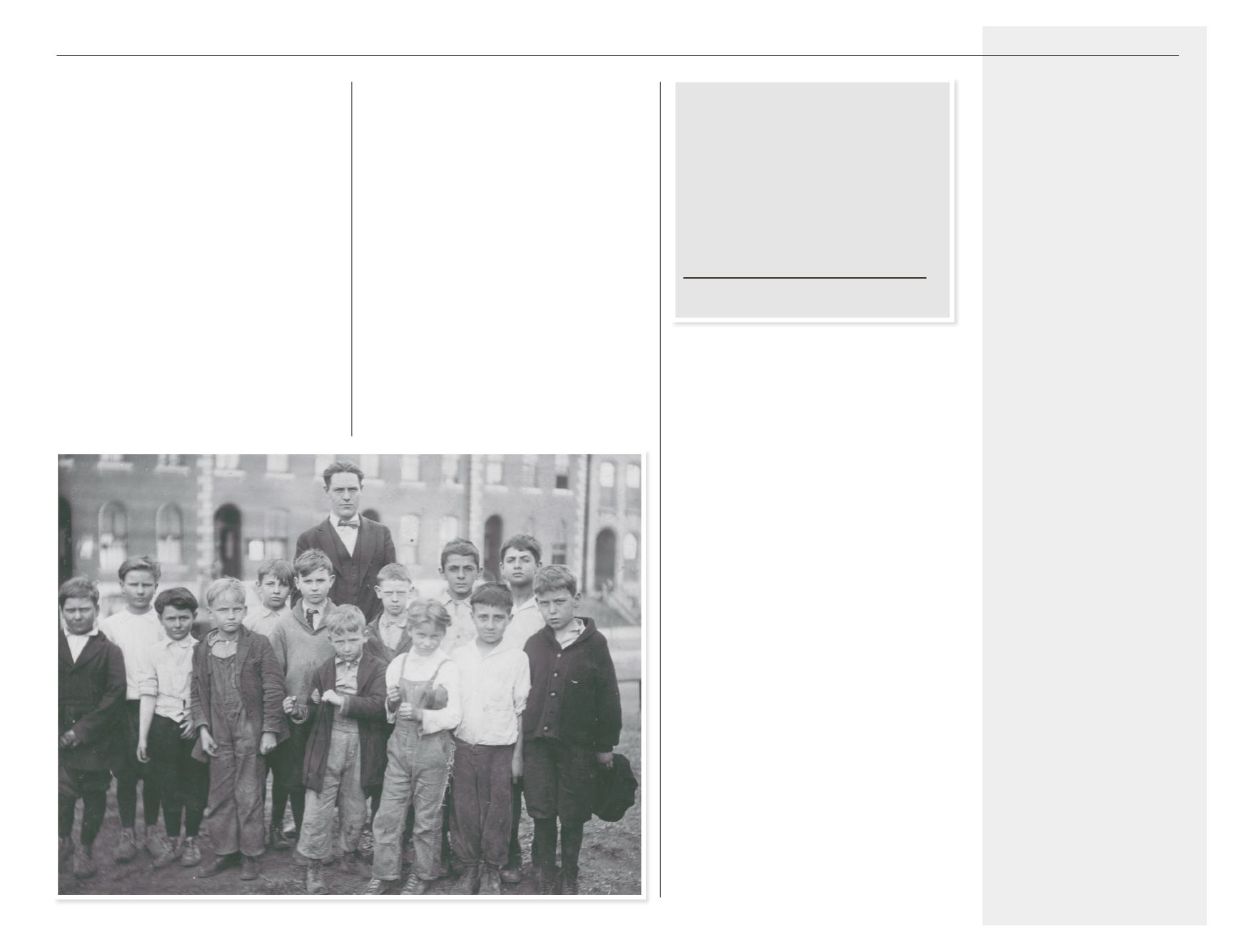

Americans” and “African Americans”
are included. Pictorial evidence
indicates the latter ethnic groups would
have comprised a fraction of the other
populations, but their designation in
the report is important as segregation
throughout the United States was the
norm.
The Twelfth Annual Report
cites statistics showing the ethnic and
national background of those persons
crammed into the Seventh and Eighth
ward:
This district was described three
years later as:
…one of the most congested in the north
to Rutger street on the south and from the
river on the east to Fourteenth street on
the west. We are a factory district and ours
is a community of working people, some of
them prosperous and progressive, but the
great majority of them living perilously near
the ‘danger line of necessity,’ with a large
portion of the ‘submerged tenth’ – those
who have sunk below the danger line and
must be helped or else live under conditions
unfit for human beings. There are some
influences for good in the district – notably
the Catholic parochial schools and the two
fine public schools, with which we gladly
co-operate – but the influences for evil are
largely in preponderance. There are one
hundred and fifty-five saloons in the district
besides small club rooms, dance halls run
with little regard for morals or the law and
cheap nickelodeons. The entrance to the
Free Bridge is near Kingdom House and its
opening has had a noticeable effect on the
morals of the neighborhood.
Gangs, drugs, overcrowding, poverty
and disease plagued the area around
Kingdom House and would persistently
continue into the future.
This chapter illustrates the pivotal
role that the Woman’s Home Missionary
Society played in the formation and
support of what became Kingdom
House. Their efforts, which succeeded
where bold earlier and thoughtful
attempts had failed, marked a devoted
undertaking in order to build something
in the city that would contribute to
the well-being of its citizens. Those
previous endeavors at mission
involvement were met not with defeat,
but with a renewed effort to channel
their energies, time and talent into a
mission that would bear fruit. This they
found in the Open Door Mission of Rev.
Aaron Lichtenstein and the ambition of
William M. Sloan. Little did any of them
know how long that Kingdom would
continue to advance.
21
C
P
hoto
:
C:
“Boys’ Story Hour, 1927”
“W
e
are
a
factory
district
and ours
is
a
community of
working
people
,
some
of
them
prosperous
and
progressive
,
but
the
great majority of
them
living
perilously
near
the
‘
danger
line
of necessity
,’
with
a
large
portion of
the
‘
submerged
tenth
’ –
those who have
sunk
below
the
danger
line
and must
be helped
or
else
live under
conditions unfit
for
human
beings
.”
C
hapter
O
ne
:
B
eginnings
(1902-1927)
Native white of
native parentage.......................... 14,987
Native white of
foreign parentage........................ 16,307
Foreign born whites.................... 12,658
African American.......................... 2,190
Total............................................. 46,142















